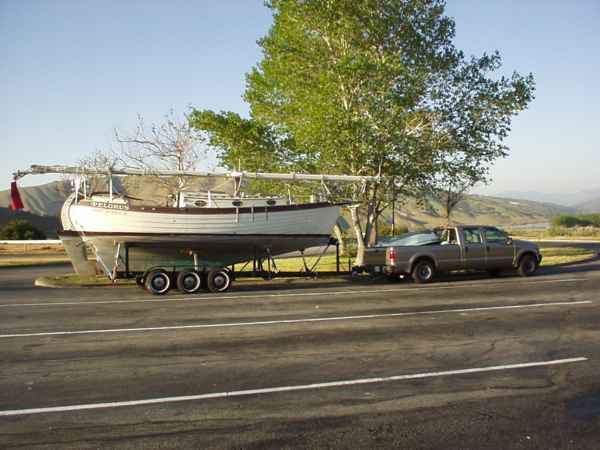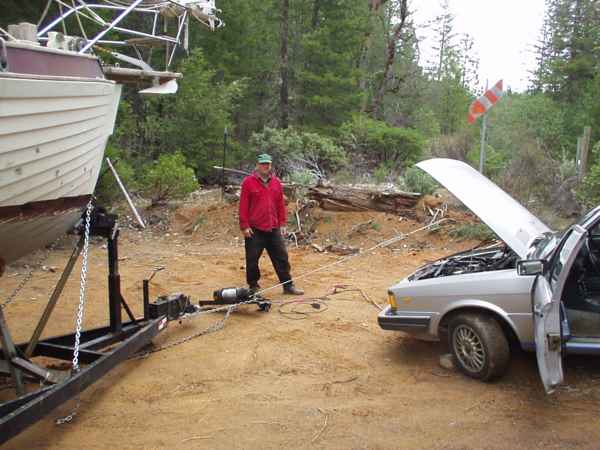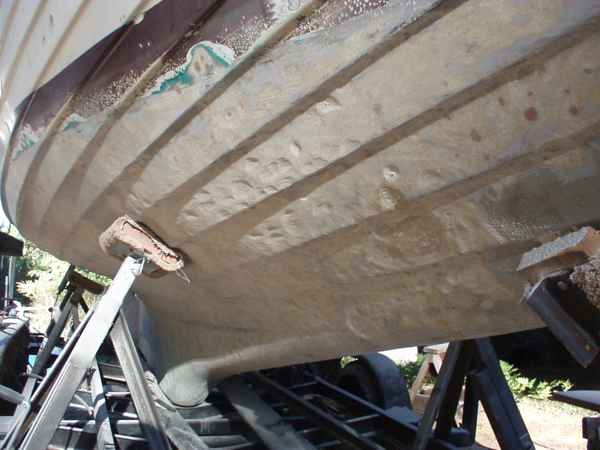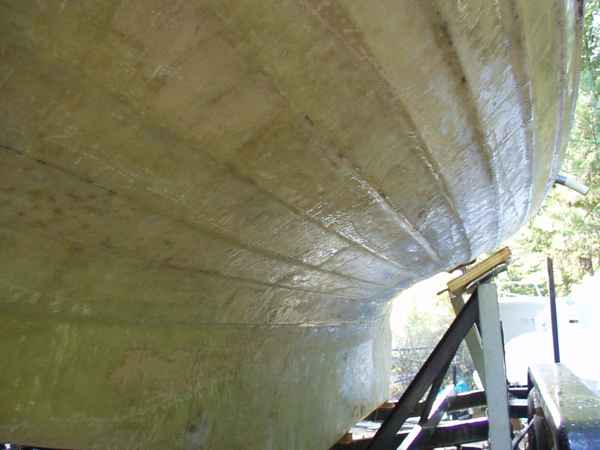
Climbing the Grapevine out of the L.A. basin the rented gasoline powered Ford did an admirable job, but sure did suck down some fuel. Still though, considering the size and weight of the rig, the 6mpg we got seemed pretty good.

The two wheel drive truck could not quite pull her up the driveway.

Long hours of winching was better supported by the little diesel engine in my Audi. For more on the early Audi diesels see The First Generation Audi 5000.

An agricultural tap to heat the house and run a generator might have been prohibitively expensive, but the PG&E signpost made a convenient winching point.

First step material removal: Hard work and a horrible mess maker. We considered a Gel-Plane brand material removal system, but the lapstrakes in the hull made this seem unlikely to work well.

Some of the blisters were very deep, going nearly all the way through the hull. Two previous blister repair jobs in the past had done more harm than good, with huge chunks of soggy autobody filler falling out of some of the caverns.

With the first coat of epoxy painted on, the project began to look up.

Ounce and a half per square foot mat did not well conform to the sharp turns of the lapstrakes, and was imensely difficult to apply.

On the flat and straight keel though two layers of mat and epoxy quickly and easily built up an eighth inch of new strong and impervious protection.

Six ounce per square yard cloth went on much more easily over the lapstrakes. Two overlapping layers applied in two coats made for a thickness of just over a sixteenth of an inch.

With three coats of epoxy resin and aluminum barrier coat additive painted on over the relamination the total thickness of new material was about 0.1 inches.

The topsides were prepped with a thickened epoxy primer.

Brushing the thick primer on along the lapstrakes made for a nice wood grain effect.

The Interlux Perfection two part polyurethane paint went on...well, perfectly.

With three thin coats brushed on, the Jade Mist Green paint was glassy and smooth like the best paint jobs attainable. The frost visible on the ground in this picture should have been a clue that trouble was to come.

The cold weather itself was only a minor problem, as the 50 degree afternoons allowed the two part system to cure in a reasonable amount of time. What wreaked havoc on the paint job was the snowstorm the night of the last coat of paint. The wet and slushy snow falling on the side of the hull is what gave the paint job it's unique weathered appearance.

Brightwork done and ready go.

The very well used '95 Dodge, with 415,000 miles on the Cummins diesel, we bought to haul Eva back to the water was in need of it's third automatic transmission replacement. The Chrysler 904 is a lighter version of the old TorqueFlight 727, and still very cheap and easy to rebuild.

The inline pump and torque converter did not work well together for hauling such a big load, but once out on the open highway the 12mpg locked up in third gear at 55mph that we got seemed just peachy.
Back to Photo Essay Index